The future of food in Bowdoin’s backyard
November 30, 2018
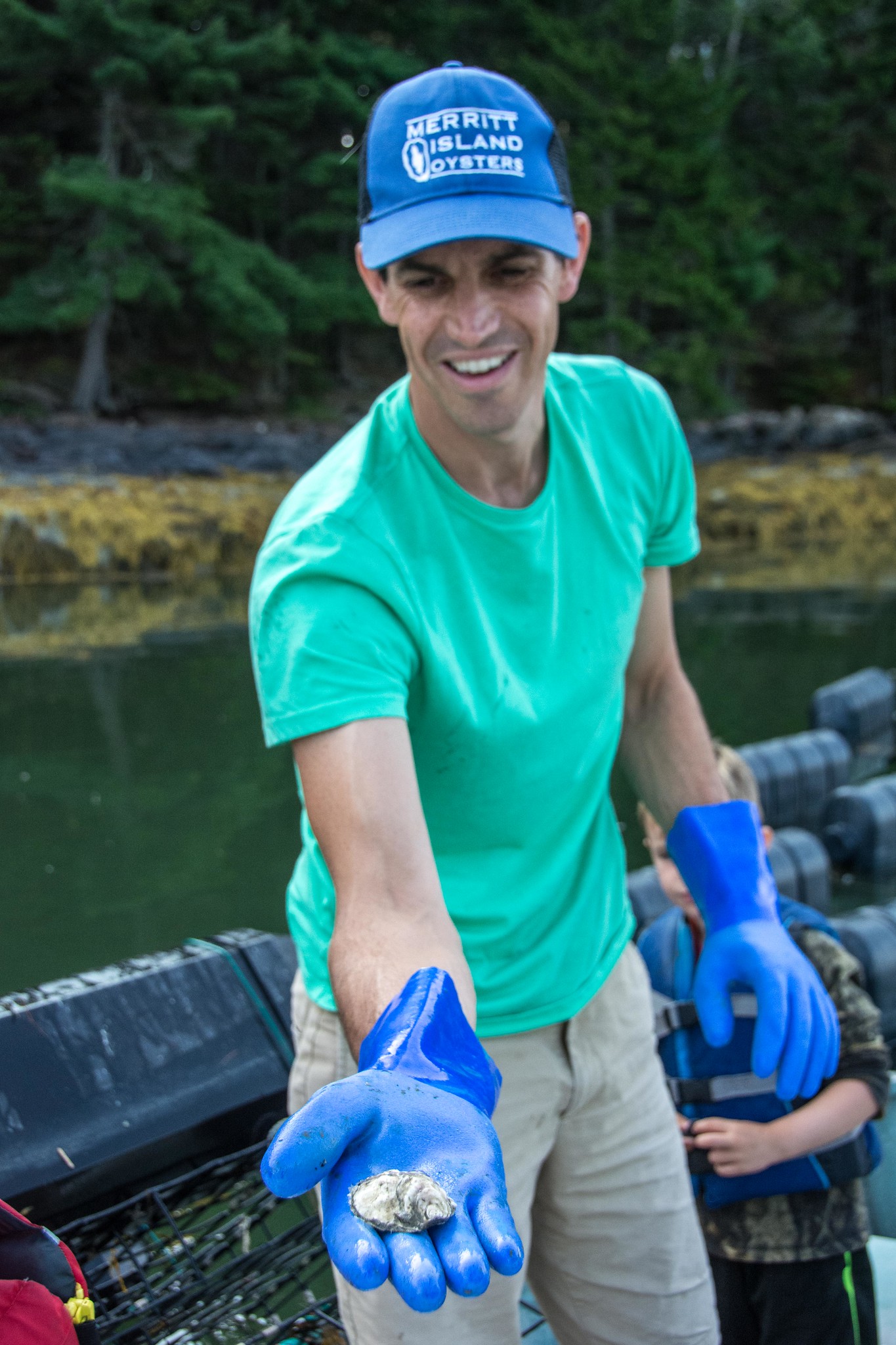 Courtesy of David Gray
Courtesy of David GrayOysters need time, movement and a little TLC, says Jordi St. John. Otherwise, their speckled shells clench up, congeal, lose the space they need to make a home. Carrying a brush and a sure grin, he runs fine bristles along the plastic bags where shellfish grow, brushing specks of algae that fall into the waves surrounding Merritt Island.
St. John is an oyster farmer on the New Meadows River, a 12-mile long tidal stretch at the northern end of Casco Bay. Though his farm is buoyant, existing only within a floating five-foot radius of the rocky tree-lined shores, he considers Merritt Island—a 28-acre enclave owned by Bowdoin—home base.
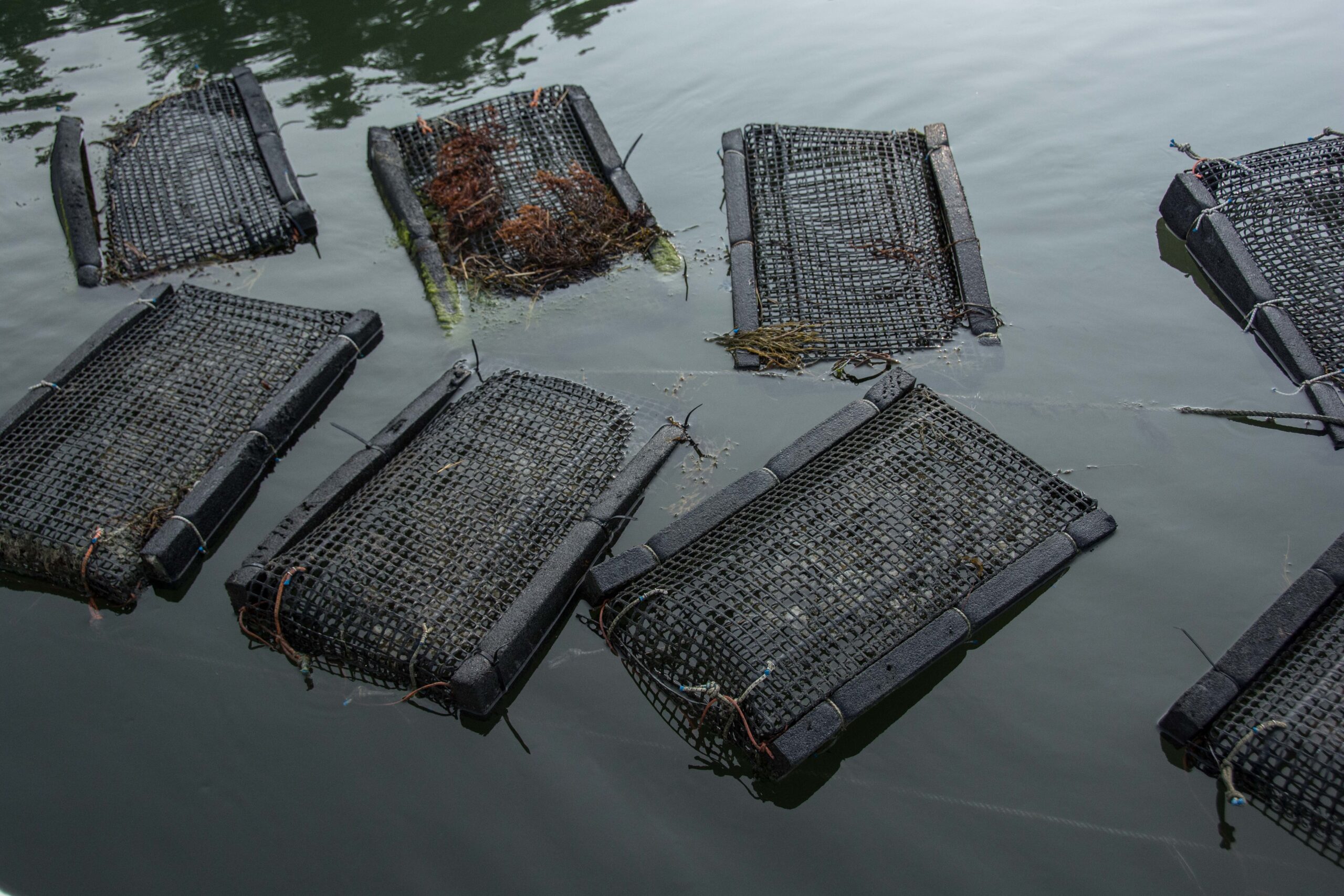 Courtesy of David Gray
Courtesy of David Gray“There are really two main oyster meccas, if you will,” St. John said. Number one: the Damariscotta River, a thirty minute drive north, where the water boasts a perfect combination of salinity, temperature and movement. “They’re pretty well known as the oyster hub,” said St. John. But the tides are turning in the New Meadows River, where the number of oyster growers has more than doubled in the past three years.
“My thought is, it’s not crazy expensive to get into, the overhead is not too bad,” he said. “And the payback is pretty good—you can sell a full grown oyster for anywhere from 70 cents to a dollar.” As baby seeds—St. John refers to them as spat—the oysters go to growers for about five cents. He notes that raw oysters have garnered an appeal in recent years.
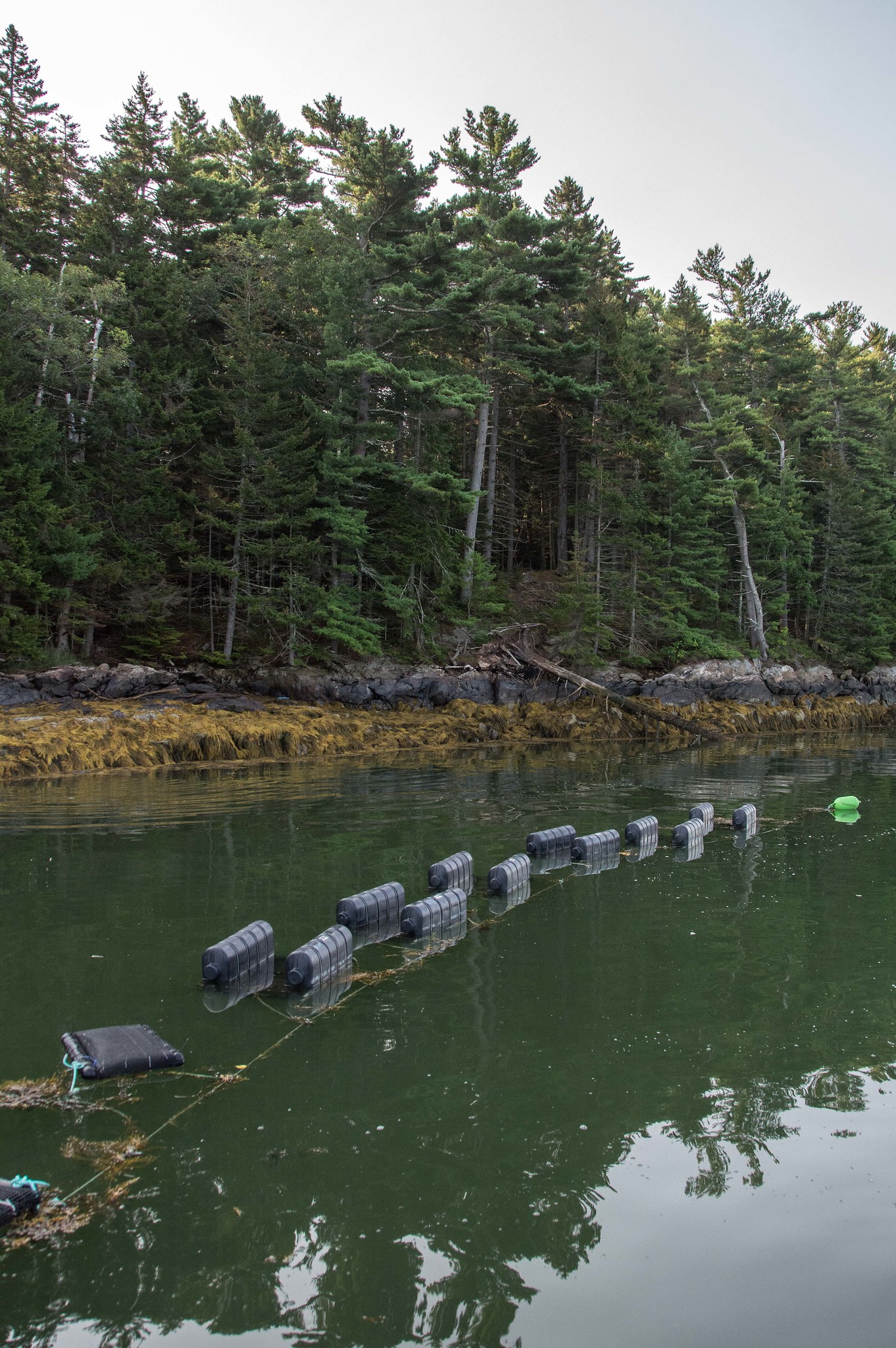 Courtesy of David Gray
Courtesy of David Gray“There’s a large demand for the Maine oyster, mostly because there hasn’t been that much production of them. And I think people realize that Maine has pretty good clean water,” said St. John.
Because the small bivalves can filter up to 50 gallons of water per day—as a natural byproduct of their feeding on various phytoplankton—oyster farming is lauded as environmentally friendly, too.
Aquaculture farming is a practice that’s taken off in recent years, according to Director of the Schiller Coastal Studies Center David Carlon.
“The future of the ocean is that all the fisheries are going extinct—it’s not that the species are going instinct—it’s the fisheries,” Carlon said. “So people need to get used to it now, because that is the future.”
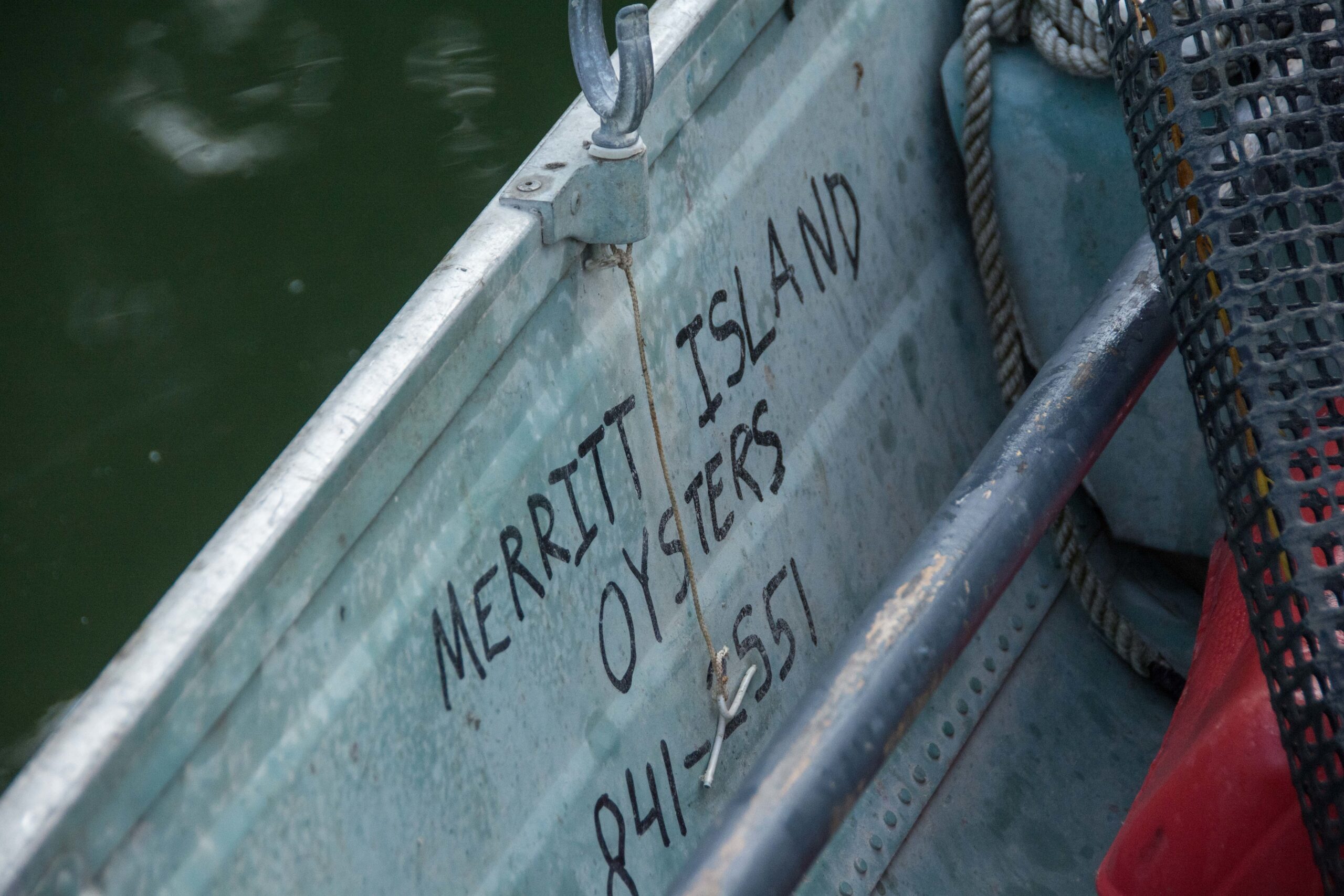 Courtesy of David Gray
Courtesy of David GrayThough oysters are not native to the state—waters are much too frigid—they do well here because of Maine’s miles of uninterrupted and pristine seaway. And as climate change quickens its pace, said Carlon, warmer waters ensure an increasingly habitable climate for the shellfish.
Afloat in the early morning waves, St. John lifts a couple large bags into the boat, shakes them around and scrubs the algae growth and oyster waste out of the plastic holes. If he doesn’t perform this simple step—which he aims to do once a week—the oysters are likely to grow together, something their species is wont to do.
These he will lug to Portland the next day for consumption at the Maine Oyster Company. Then, in about a week’s time, he will motor back to the island, flip over the remaining cages bobbing along the shore and wait until they sink to the ocean floor.
These oysters, a sort of transplant species called Crassostrea virginica, clam up when the water dips below ten degrees celsius, making it virtually impossible for them to do anything other than embrace their vegetative state below the ice and bide their time until summer shows its face.
When they do see the light of day, they will be scrubbed, culled and sent off to a raw oyster bar for consumption by those who appreciate the salty, sweet finish of a Maine-grown oyster. St. John will purchase more seeds from the hatchery and continue his ritual of growing oysters, day by day.
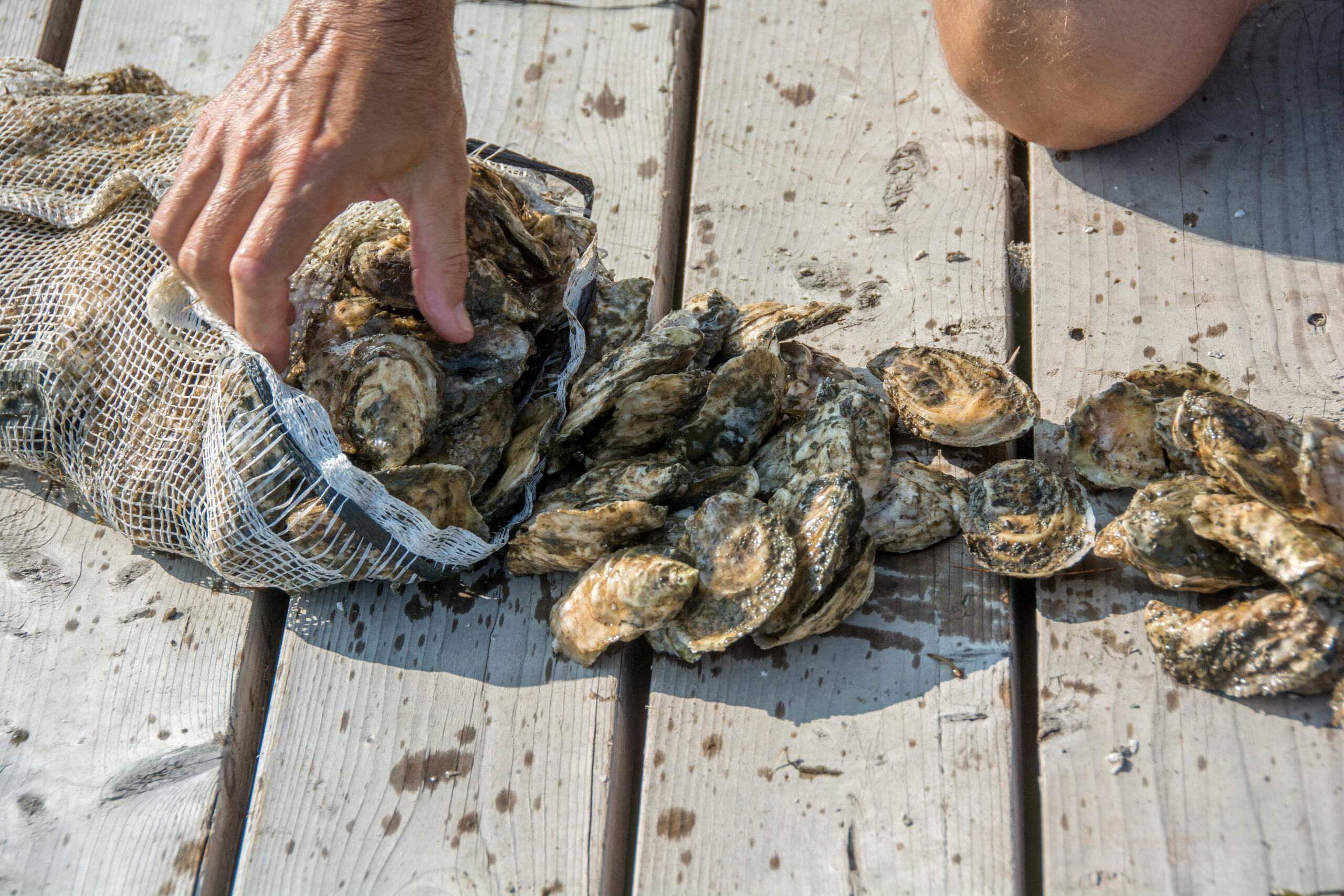 Courtesy of David Gray
Courtesy of David GrayBowdoin has owned Merritt Island since the late 1990s, when Richard Sanborn ’40 gifted the 28-acre retreat to the College for the use of the Outing Club (BOC). These days, Merritt Island is the site of orientation trips, BOC overnights, affinity group adventures and many students’ first introduction to the Maine coast.
In order to jumpstart his operation, St. John had to notify the landowner—riparian land owner, in official jargon—closest to his set-up. Just off the shores of Merritt Island, he contacted Bowdoin in order to obtain a Limited Purpose Aquaculture License.
According to Director of the Outing Club Mike Woodruff, oyster farming around Merritt Island is a low-impact, efficient way to utilize the resource as the island becomes more of a student destination.
“I think we’re in fact going to see more and more use of Merritt Island because of its proximity to campus and because students are seemingly excited to do local outing trips,” he said. “They’re very low-barrier to entry trips.”
But Bowdoin students visiting the island will have to wait until spring to get a glimpse of the floating farm. The week before Thanksgiving, St. John put his farm to bed for the winter unscrewing each pontoon, flipping it and then observing the slow drift to the ocean floor.
“And then they’ll sit on the bottom all winter and I won’t touch them. Because there’s not much that they can do right now,” he said. “They’re not growing.”

Comments
Before submitting a comment, please review our comment policy. Some key points from the policy: